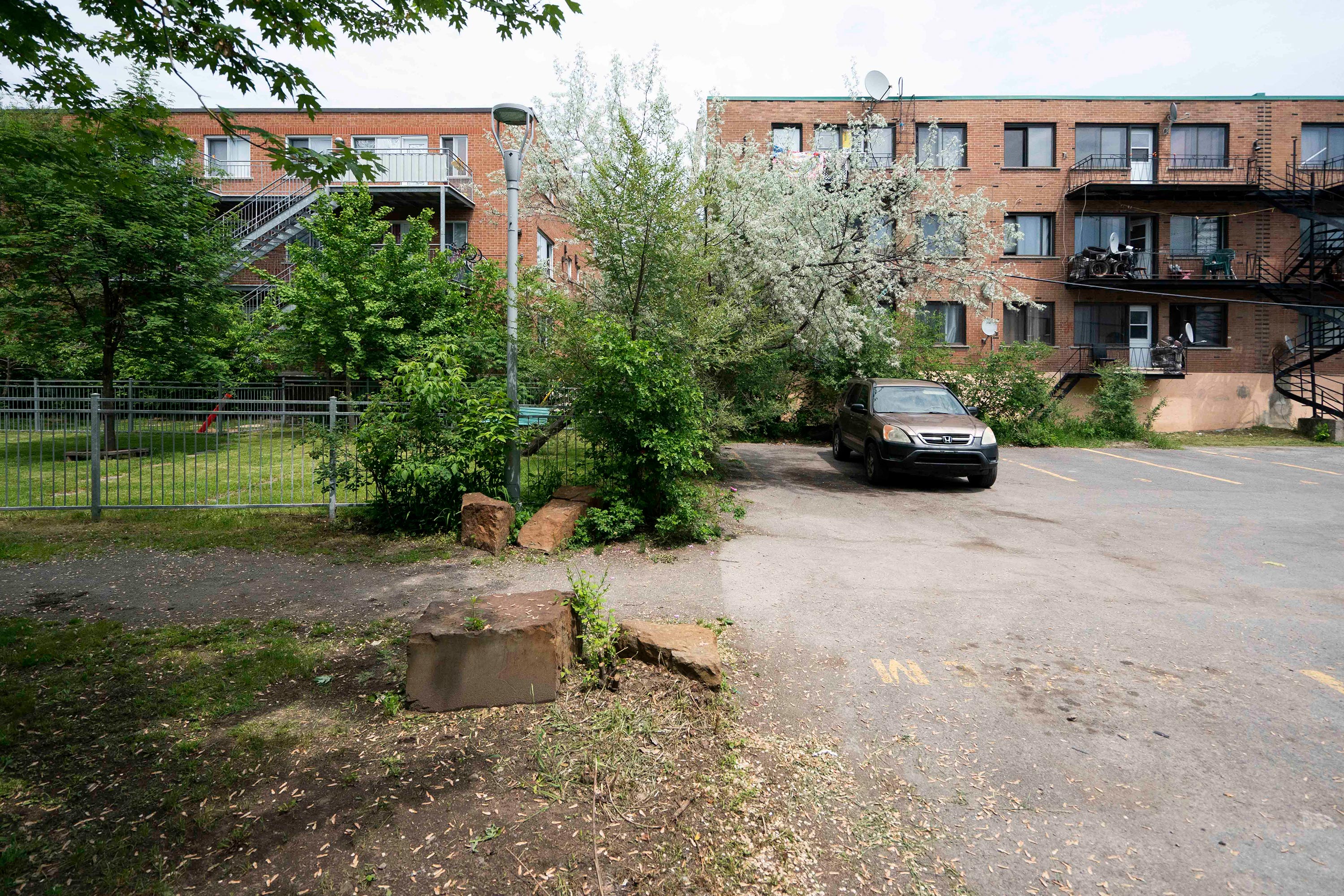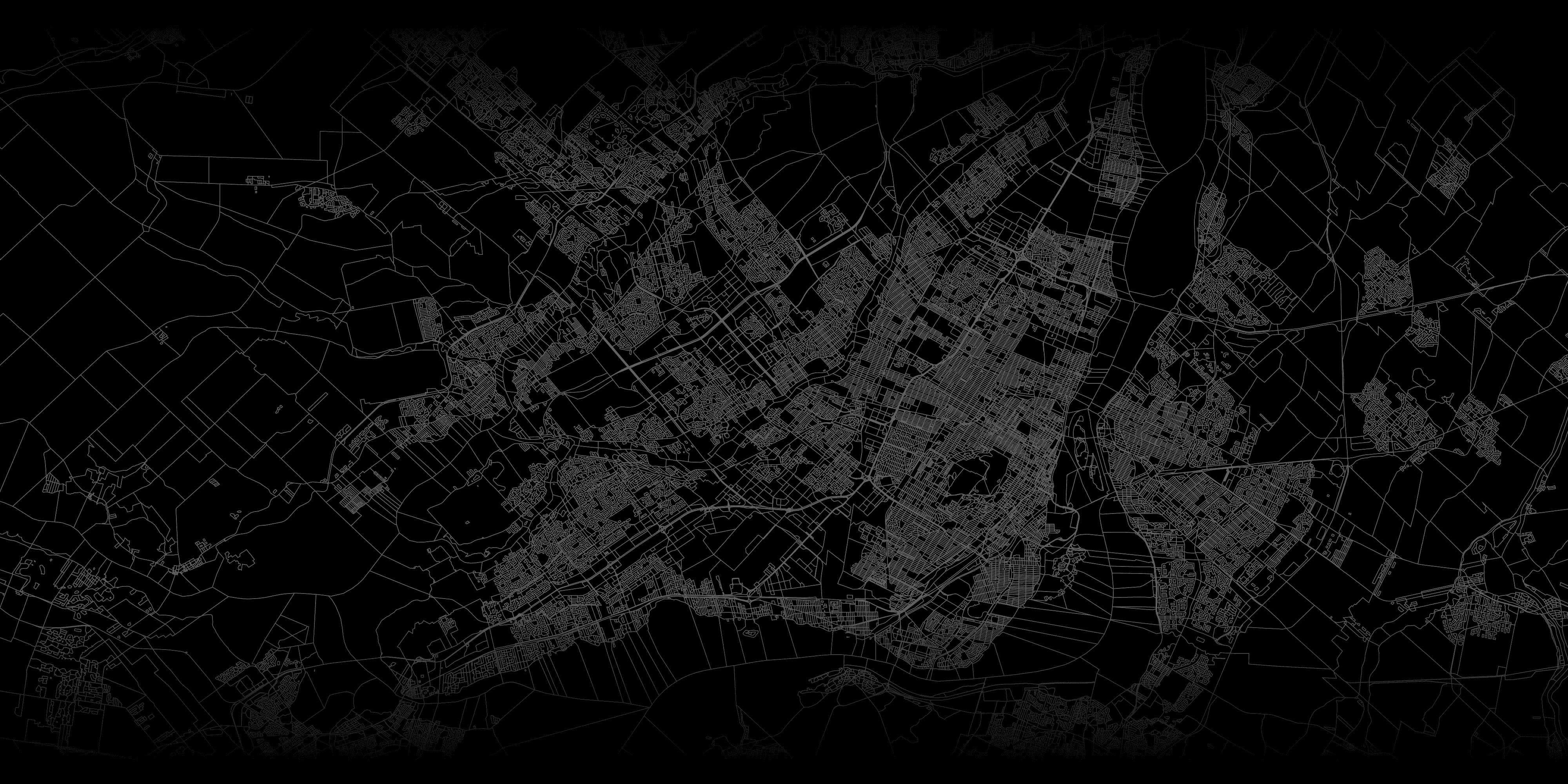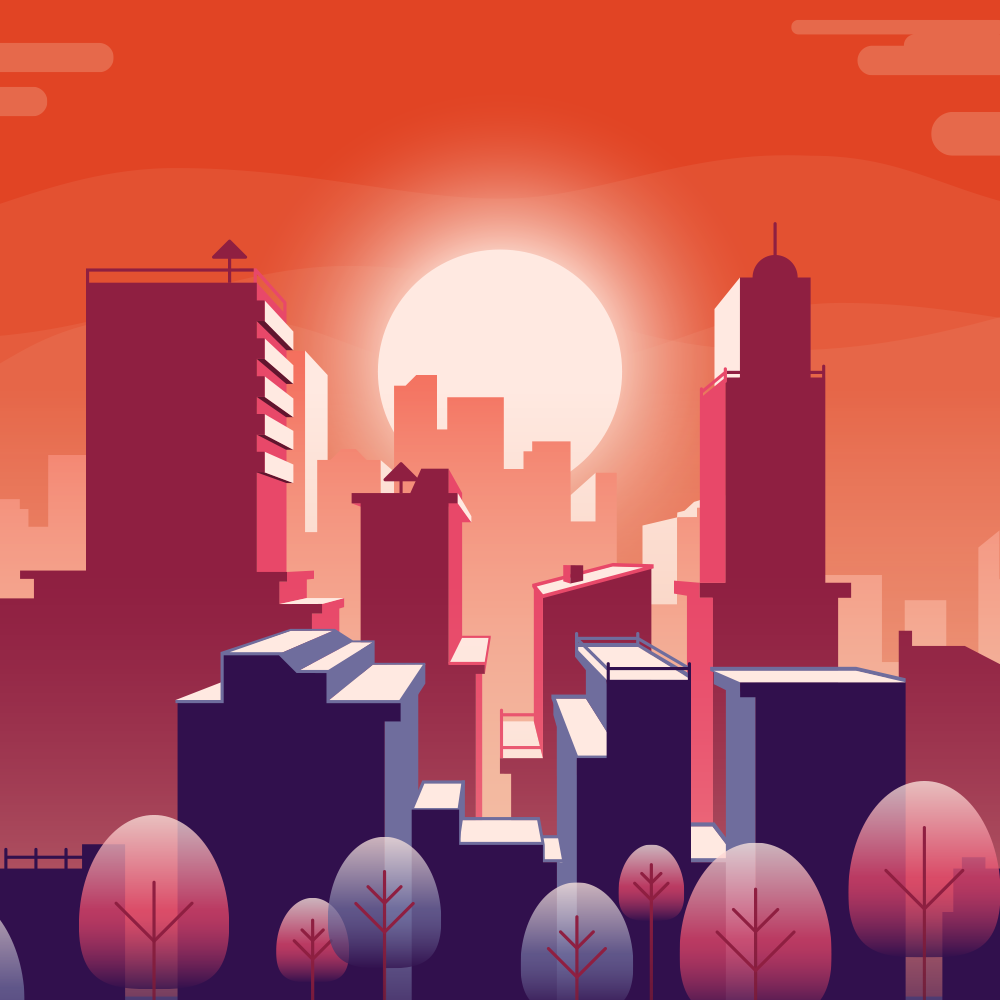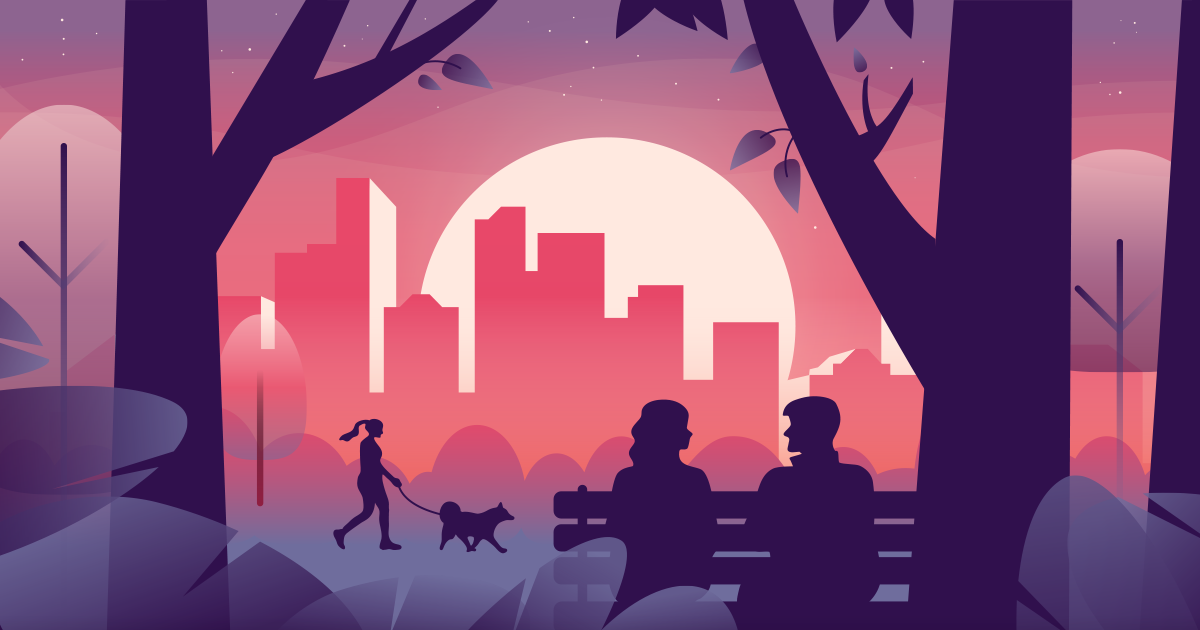



















COOLING
CANOPY
During hot summer days in Montreal, Jesse Hébert likes to escape the heat by spending time in a citizen-run park next to his apartment in the city’s north end.
On one such day recently, when Montreal hit a high of 32 C with the humidity, Hébert sat at a picnic table in the green space, enjoying a cool breeze.
While admiring the apple and pear trees in the grassy courtyard, Hébert pointed out the sound of birds chirping.
“You feel like you’re in the country,” he said.
Hébert, who lives in community housing next door, says even when temperatures soar above 30 C, it’s cool enough in the shade here.

Dubbed la Voisinerie, a play on the French word for neighbour, this urban oasis is a success story for local community groups.
Hébert says you wouldn’t recognize the space if you saw what it used to look like — a parking lot that would radiate heat on summer days.
“It was crazy. It was very hot,” he said.
The space is located in the middle of what’s known locally as Îlot Pelletier, a block of midrise apartment buildings on Pelletier Street in Montréal-Nord, where a significant concentration of low-income families live.
Before it was a park, the area was once a notorious hangout for street gangs. Not only did all that asphalt parking lot contribute to warming the environment, it was a site for drug trafficking and criminal activity.
“Everyone stayed in because the street gangs took over the parking lots,” Hébert said.

Now, Hébert stands in that same spot with his girlfriend and four-year-old son, Brandon, surveying the vegetables they help grow.
The asphalt has been removed and replaced with raspberry plants, a community garden, grass and trees. Hébert says it’s not perfect — there’s vandalism and local youth who sometimes cause trouble — but it’s much improved.
“Climate change is getting worse and worse,” he said. “Here, we have this pleasant space where the air is fresh, there are birds singing … it’s super. There should be more areas like this.”

Paul Lévesque, who was invited to join the garden by a friend, said pitching in brings him a lot of pleasure.
He lives in the neighbourhood and takes a bus to la Voisinerie to volunteer there most days.
“It’s good for the environment,” he said.
He points out vines they’re growing to help create more shade.
The Îlot Pelletier project, completed in 2018, is part of a movement in Quebec to curb the heat island effect in low-income neighbourhoods.
The City of Montreal also has a heat wave response plan, which includes a host of measures including extended pool hours, emergency cooling shelters and targeted door-to-door checks in vulnerable neighbourhoods.
But projects like the park in Montréal-Nord focus less on crisis response and more on prevention, by making neighbourhoods more climate resilient.
The initiative was led by community organization Parole d’excluEs, in partnership with ILEAU, an urban development program run by non-profit organization CRE-Montréal.

“We are getting more and more heat waves every summer … we’re not getting out of this,” said Nilson Zepeda, campaign co-ordinator with ILEAU, which in French stands for Local Interventions in Environmental and Urban Planning.
His work takes a holistic approach, combating the heat island effect by removing asphalt and planting vegetation, while also creating spaces that improve mental health and overall well-being.
“We create community. That sounds like a cliché, but it’s super important to put people together,” Zepeda said.
Since ILEAU launched in 2015, it has received more than $1 million in funding from the province of Quebec, planting more than 30,000 plants and removing more than 3,000 square metres of asphalt.
The Public Health Agency of Canada highlights the program as an example of how it’s possible to address extreme heat in cities through practical changes.
While the Montréal-Nord green space is a success story, Zepeda says it’s only because the property owner — a non-profit community housing organization called SHAPEM — was on board.
One of the biggest obstacles he has encountered is trying to convince private businesses that giving up parking spaces for tree canopy is worth it.
There’s also the challenge of finding suitable spots where root systems won’t interfere with underground infrastructure, plus the fact that digging up concrete and asphalt to plant trees isn’t cheap, not to mention the expense of long-term maintenance.
Despite the obstacles, experts say more initiatives like ILEAU are needed across Canada to protect the most vulnerable people in cities from extreme heat.
This map is based on interactive mapping developed by the HealthyDesign.City program.
A bird’s eye view of Montreal reveals where tree canopy is concentrated in the city.
Funded by the Public Health Agency of Canada, the map uses census data and information about the way cities are built to illustrate where the most vulnerable populations live.
Here, the brightest yellow dots show where overlapping factors like low income and a lack of tree canopy make residents more vulnerable to extreme heat.
Navigate a more detailed map to explore how equally tree canopy is distributed in your city.

HOW GREEN SPACE COOLS
Whether Canadians are ready or not, more heat events are headed this way, says Scott Krayenhoff, an assistant professor of atmospheric science at the school of environmental sciences at the University of Guelph in Ontario.
“It’s hard to know exactly what’s coming, but my sense is … we are really headed for different climates in our cities. Climates that we may have never seen,” he said.
Krayenhoff has studied urban heat extensively and uses computer modelling to show how the climate in a city is affected by the way it’s built.
Most people are familiar with how solar exposure makes us feel hot. Imagine walking on the sunny side of the street on a hot day and then crossing over to the shady side.
Krayenhoff says standing underneath the shade cast by a single tree can feel as much as 10 to 15 degrees cooler compared to standing in the sun on a hot day.
What many people don’t realize is how the surfaces around us can make us feel warmer, through something called infrared radiation.
If you were to hold the palm of your hand half a metre above an asphalt parking lot on a sunny day in July, and then do the same thing over a patch of green grass, you would feel a difference.
Krayenhoff says that’s because of the infrared radiation coming from surfaces like pavement.
“When they heat up, they’re actually beaming infrared radiation at you as you walk down the street,” he said.
Tree-lined streets help reduce that warming effect, because they shade surfaces like pavement from the sun.

WHEN SHADE IS RESERVED FOR THE RICH
Unfortunately, tree canopy is often distributed unequally in cities, another factor that explains why Canadians with lower incomes are at a disproportionately higher risk of suffering from extreme heat.
A 2020 research paper suggested that people were about half as likely to be surrounded by a high amount of vegetation compared to other areas of a city if they lived in neighbourhoods of Toronto, Montreal and Vancouver with lower education, employment and income levels.
A 2016 research paper found that in Toronto, the number of heat-related ambulance calls was nearly 15 times higher in neighbourhoods with a tree canopy of less than five per cent, compared to neighbourhoods with a tree canopy of more than 70 per cent.
Climate change resilience advocate Nilson Zepeda points to a glaring example of income inequality and access to green space on the Island of Montreal.
The Town of Mount Royal — an affluent municipality in the centre of Montreal — is well-known for its tree-lined streets and even brands itself as “a garden city.” The green dots show the tree canopy.
Next door is the much less green Parc-Extension, one of Canada’s poorest neighbourhoods, according to an analysis by United Way in Montreal. The yellow dots show where factors like low income and a lack of tree canopy make residents more vulnerable to extreme heat.
“It’s like night and day. It’s crazy,” Zepeda said.
The stark contrast in tree canopy between the two districts is marked by the single road that divides their boundaries — the boulevard de l’Acadie.

That’s why community organizers say addressing the heat island effect has to involve more equal access to green space for everyone.

ADDRESSING DEADLY HEAT INDOORS
It’s not just the outdoor urban landscape that needs to change if cities want to prevent heat waves from turning deadly. In fact, many of the deaths that happen during heat waves occur indoors, in hot, poorly ventilated rooms and apartments.
Air conditioning alone, without other measures, will not address extreme heat in a way that’s equitable.
A report by the Public Health Agency of Canada points to simulations in Paris and Houston, Texas, which studied the effects of widespread use of air conditioning in dense urban environments. The results suggested that when people use air conditioning, even as they’re cooling down the temperature inside their homes, they could be simultaneously warming up the outdoor environment by as much as 2 C.

That’s why experts like Concordia University building engineering professor Leon Wang are studying other ways to cool buildings.
Wang explains buildings can take longer to cool off than the outdoors, because of the way they store and trap heat. That’s why he says heat wave deaths sometimes happen indoors in the evening, after the temperature has started to go down.
That contributes to heat killing people through what he describes as a “silent process.”
“They’re losing water, their core temperature is 38 C, and they are in danger, but they don’t know that,” Wang said.
When it comes to cooling down buildings, Wang says there are some key features to consider.
An apartment with poor ventilation in a well-insulated building will be more likely to trap heat.
Ventilation — like fans or a cross breeze flowing through open windows on opposite sides of a home — make a big difference.
Window type matters as well.
Large, untinted windows let in more heat.
Glass that’s tinted or made with special coatings can help reduce the amount of heat that’s let inside.
The colour of a building makes a difference, too.
Darker buildings, like those with red brick, tend to absorb more heat.
Lighter colours will do a better job of reflecting the heat.
The same goes for roofs.
Replacing tar roofs with white ones and building sloped roofs out of special cool-coloured materials can help reflect solar radiation and keep residents inside cooler.
Wang’s research includes an ongoing study that is monitoring temperatures inside and outside of buildings in Montreal. His team plans to use that data to create computer modelling that could help buildings across Canada better adapt to changing temperatures.
As climate change continues to exacerbate extreme heat, there are a range of tools cities can use to protect the most vulnerable.
What happens next comes down to whether people choose to act, and how soon.
“A lot of people understand the importance of [this work], but they say, ‘It will cost too much,’” Zepeda said.
“But not acting, it will likely cost us more.”












